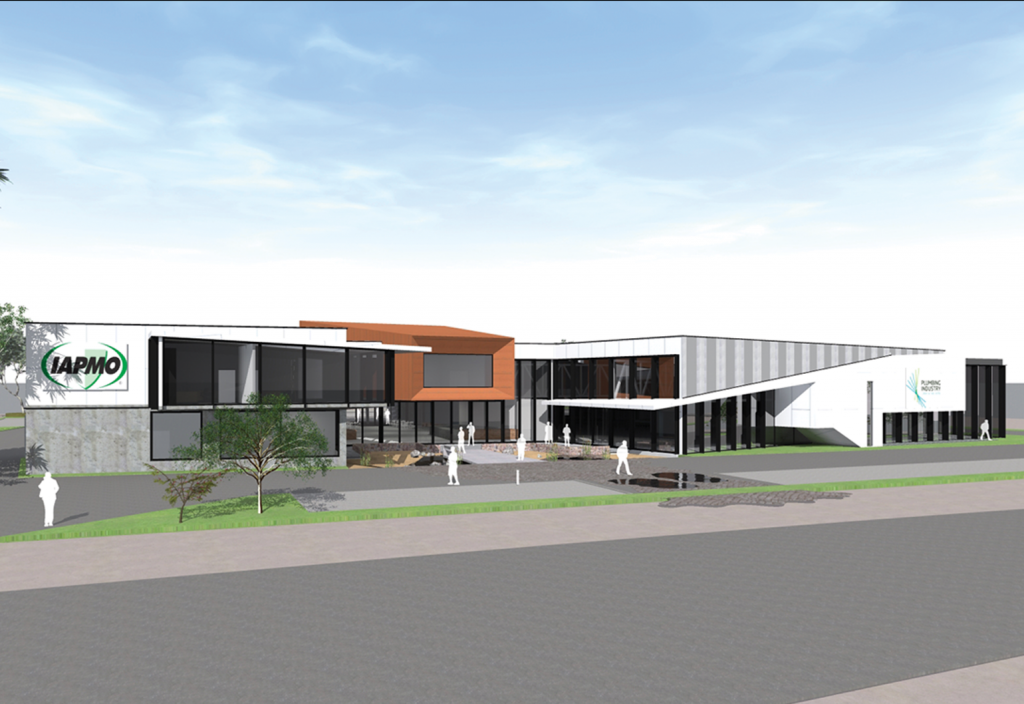Engineers and architects are combining forces to create an Australian first: a net-zero energy education and research centre.
Buildings account for 40 per cent of the world’s energy consumption and one-third of global greenhouse gas emissions.
As climate change continues to have an impact on the planet, the design and engineering of sustainable buildings have become increasingly significant.
In particular, net-zero energy (NZE) buildings are quickly moving into the spotlight. Australia is set to have its first NZE education and research facility with the Plumbing Industry Climate Action Centre (PICAC) at Narre Warren in southeast Melbourne.
The World Green Building Council defines a net-zero carbon building as one that is highly energy efficient and completely powered from on-site or off-site renewable power. Through a range of design and technological measures, the PICAC complex generates enough energy to support its own requirements.

Engineering firm Norman Disney & Young (NDY) has led the strategic advisory team responsible for delivery of the building complex, as well as providing engineering and sustainability services.
The new facility incorporates a passive design strategy, which includes a focus on natural light and ventilation, and a highly insulated building fabric.
As a point of reference, the team examined other contemporary approaches, including the International Living Future Institute and its Biophilic Design Initiative, which aims to educate, inspire and reconnect built environment professionals to transform people’s daily experience.
“We were also influenced by the Sustainable Buildings Research Centre at the University of Wollongong, which NDY worked on and which is net-zero energy,” said Tony Arnel, Global Director of Sustainability at NDY and President of the Energy Efficiency Council.
New technology
PICAC’s first education complex in Brunswick achieved a five-star Green Star rating in 2012. The project team was keen to work with the client to design and build a facility that embraced new technology and ideas.
“We recognised that if we were ambitious, we could create a showcase for a net-zero building in Australia,” Arnel said.
To do this, NDY worked with FMSA Architecture by looking at the functional uses of the space — part of the building is a conventional office and the remainder consists of workshops, laboratories and teaching facilities.
The energy-efficient design by FMSA Architecture maximises northern exposure to both the ground and first floor, with deep overhangs on the north and vertical shaded glazing to help deal with unwanted solar heat gains and glare while allowing solar access.
The structure, with Miglic MacLeod as designers of the concrete, steel and civil works, also features an insulated wall design that largely consists of a building shell comprising precast sandwich panels on the ground floor and a lightweight metal cladding composite wall system on the first floor.
This system will achieve an R-value — a measure of thermal insulation — that will substantially exceed the requirements of the National Construction Code and assist in maintaining thermal comfort. The project team undertook extensive product research to maximise the R-value of each external wall system while avoiding encroachment of floor area due to thicker wall systems.
“There was a real opportunity to reduce energy demands by relaxing the thermal comfort bands in the workshop. In fact, we could almost achieve zero cooling and minimal heating,” Arnel said.
Warming up
Renewable energy for the PICAC will be supplied by a combination of geothermal and solar technology through a 375-kW photovoltaic (PV) system.
A total of 770 solar panels are to be installed on the roof and on top of the car park, with the team planning for more PV than what was needed in anticipation of increases in energy usage in the facility’s workshop.
“For this reason, we’ve made allowances for additional PV in the carpark without installing this extra capacity yet,” Arnel said.
NDY also proposed a combination of very deep (100 m) and moderate depth (13 m) screw bore piles to achieve a maximum geothermal solution, which was combined with the extensive solar panel installation.
“NDY modelling allowed us to forecast the demand requirements on the highly energy-efficient building over a 12-month period whilst contributing the maximum amount of geothermal and solar energy,” Arnel said.
“The geothermal system does the bulk of the heating and cooling to the office, as well as hydronic heating to the floor slab in the workshop. This helped us achieve a more flexible temperature band in the workshop.”
Incorporating all the technologies and other design features proved challenging, along with ensuring that all the services contributed to a net-zero energy footprint and didn’t clash.
Services also needed to be strategically placed throughout the building to allow visual access.
“PICAC prides itself on creating world-class training complexes, and some services are deliberately exposed so occupants can gain hands-on learning,” Arnel said.
“Through a collaborative approach between the client, architect, consultants and builders, we have overcome this challenge to showcase the energy saving measures in a true learning laboratory.”
The building is due to be completed in 2019 and will proceed through a rigorous net-zero energy certification process during the first 12 months of operation.
This article originally appeared as “Up to zero” in the February 2019 edition of create magazine.
